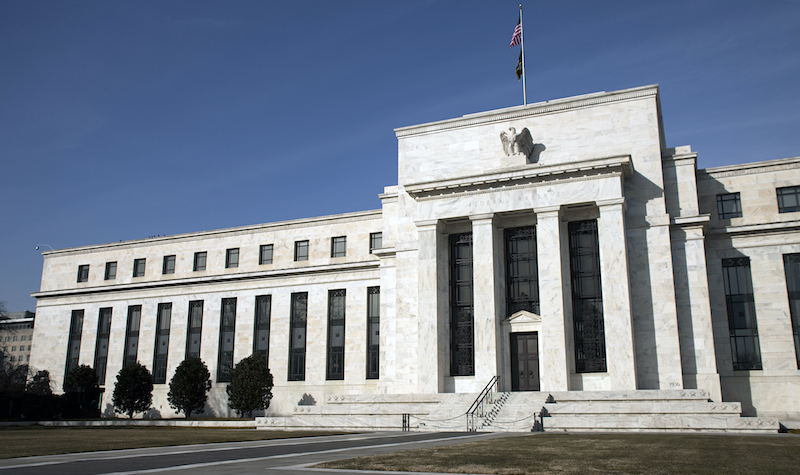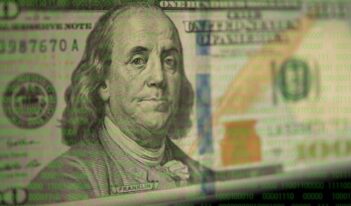
Economist argues that central banks must issue digital currencies.
As various countries move closer toward cashless economies, will their central banks introduce official digital currencies?
Some scholars argue that the proliferation of private digital currencies will compel central banks to create their own digital currencies to “preserve the effectiveness of monetary policy.”
Alex Cukierman, professor of economics at Tel Aviv University, claims in a working paper that central bank digital currencies will allow these banks to retain monetary policy as a macroeconomic tool as well as to capture “the substantial transaction costs savings associated with new fintech technologies.”
Digital currencies issued by central banks differ from private ones and from the digital representations of existing hard currencies, such as the American dollar. Currently, a dollar may be held as a physical bill or as an entry in a commercial bank account’s ledger—or even in a PayPal digital wallet.
A balance held with a commercial bank and accessed via its website is also a digital dollar but not a digital currency of the kind that Cukierman predicts central banks will soon start to issue. Such digital currencies “would not merely be a representation of physical money, as is the case with electronic cash, but a complete replacement for notes and coins.”
On the other hand, the number of private digital currencies has exploded in recent years. For example, over 5,000 cryptocurrencies exist, and though few achieve notable daily use today, some enthusiasts predict common use in the near future. Other non-cryptocurrency digital currencies have found varying success. Very few people adopted, for example, E-Gold and DigiCash. In contrast, Kenyan superstar M-Pesa—through which almost half of Kenya’s GDP flows—has been adopted widely.
Recognizing a future in which privately issued money competes meaningfully with national currencies, Cukierman warns that economic crises could worsen because central banks’ ability to use monetary policy instruments “will be greatly reduced or even destroyed” if their economies operate more with private currencies than national ones.
Cukierman also cautions that widespread availability of private digital currencies could decrease a nation’s seigniorage income, the profit that governments make by controlling the ability to create money.
Digital currencies can provide some benefits such as more efficient transactions, but Cukierman contends that a misalignment of motivations in private issuers renders the private currencies inferior to ones created by central banks. He claims that the sole motive of issuers of private digital currencies is to maximize profits, which means that they will fail to “internalize the impact of their actions for the rest of society.”
Instead, Cukierman claims that a digital currency issued by a central bank could better serve the public because these banks focus on improving national welfare. Furthermore, elections and public oversight can provide checks on central bank decision-making that Cukierman says private issuers would lack.
Just as governments today declare money valid by fiat—American dollars are legal tender because the government declares them as such—a nation could establish a parallel or replacement central bank digital currency by fiat as well.
Although most nations have not yet rolled out an official digital currency, many are exploring the possibility and others have begun pilots. The Central Bank of Ecuador, for instance, introduced “dinero electrónico” in 2014 to facilitate cheap transactions but ultimately terminated the service in 2018. Netherland’s central bank is studying Bitcoin and Libra and researching technical design considerations for a digital currency that might eventually be issued by the European Central Bank.
Others countries whose banks are planning or have launched pilots of their own digital currencies include Uruguay, Sweden, Thailand, and China. Addressing the declining use of cash in Sweden, the country’s central bank hopes “to promote a safe and efficient payment system” through a digital currency. In collaboration with the Hong Kong Monetary Authority, the Bank of Thailand intends to enable instantaneous cross-border transactions while preserving “global financial stability.”
As part of broader explorations of digital money challenges, the U.S. Federal Reserve is investigating a potential digital currency as well. Some economists explain that such a project, colloquially dubbed FedCoin, could aim to improve American transaction technology and respond to the emergence of private cryptocurrencies.
A nation that implements its own digital currency could attain several economic benefits. Making physical cash incurs printing and security costs. Other scholars highlight how central bank digital currencies could increase financial inclusion, helping reach people who thus far have operated outside of formal financial systems by providing “a direct link between central banks and citizens.”
An official digital currency could also facilitate central bank attempts to establish negative interest rates, under which commercial banks pay the central bank to take their money. Zero interest rates, once thought of as an uncrossable lower bound, have given way to negative interest rates in some European nations.
Economists such as Ben Bernanke claim that the option to hold cash limits just how negative interest rates can go, as holding cash provides zero interest. But with a central bank digital currency, the public would lose the zero interest rate cash alternative, and nations could use their official digital currencies to push interest rates even lower.
Despite their potential advantages, Cukierman notes that digital currencies issued by central banks could generate significant negative consequences as well.
Depending on how these digital currencies are designed, the public could hold funds at the central bank itself rather than at a traditional commercial bank. Currently, the general public cannot have an account at a central bank and instead must do business with commercial institutions such as Bank of America. The commercial banks in turn have accounts with a central bank, which helps settle transactions between them and requires them to maintain monetary reserves.
If digital currencies allow the public to shift funds from commercial bank accounts to central banks, the resulting drop in commercial bank holdings could create financial instabilities, Cukierman contends.
He maintains that commercial banks fulfill an important function by evaluating “the credit worthiness of different borrowers” and channeling “funds mainly to viable projects.” Cukierman argues that commercial banks better perform such lending than central banks do, and so central banks should take care to design digital currencies so that credit allocation remains with commercial banks.
In addition, Cukierman worries that central bank lending could create opportunities for crony capitalism and generate risks of politicizing central banks. He recommends that central banks structure their digital currencies in a way that minimizes the blurring of “the line between fiscal and monetary policies” that can weaken central banks’ autonomy.
Despite these concerns, Cukierman argues that nations that refrain from issuing their own digital currencies will instead risk that their physical currencies will be displaced by private digital ones. For Cukierman, the question is not if central banks will introduce their own digital currencies, but whether they will do so sooner or later.



